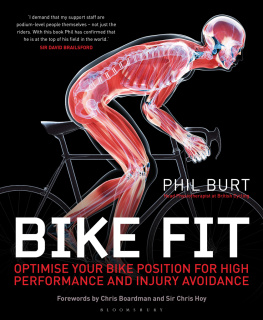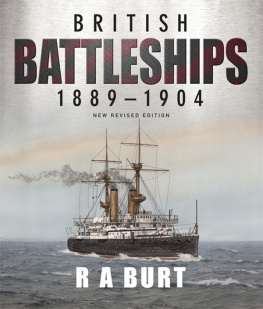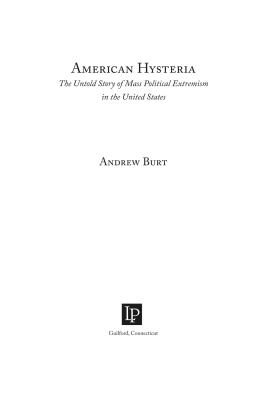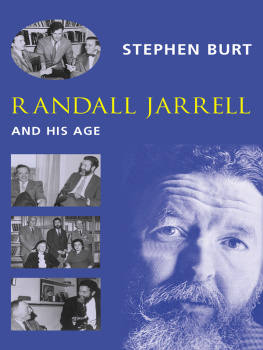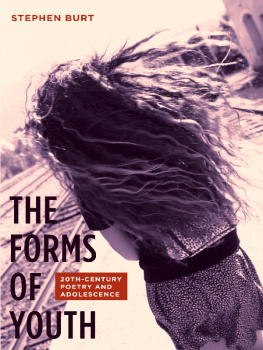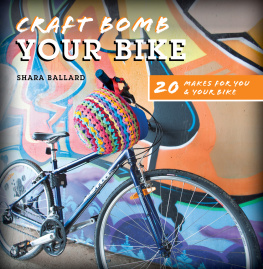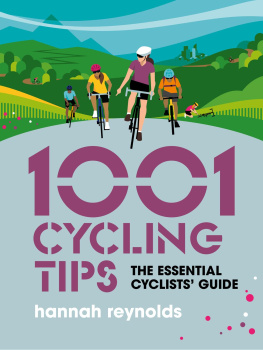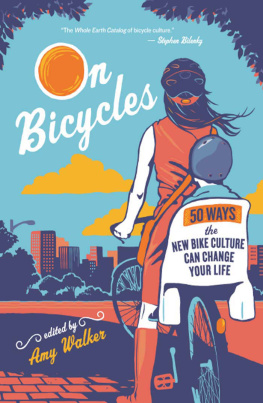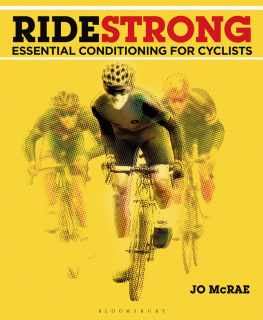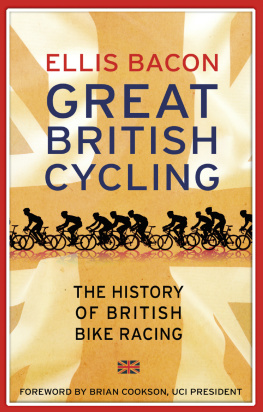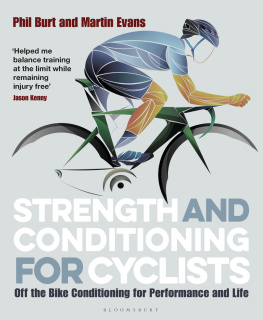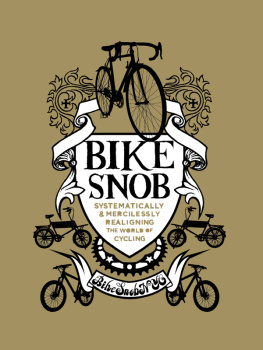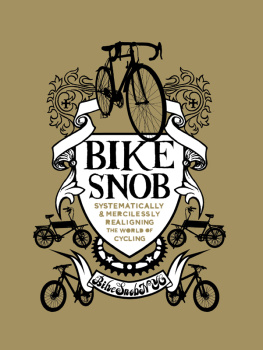
FOREWORD: SIR CHRIS HOY
I love seeing so many people out on bikes, but few things frustrate me more than seeing someone riding a machine that is poorly set up.
When I speak to new cyclists, it is striking how often they complain of a sore bum, or a bad back, or an injured knee. Theyve tried cycling, they say, but find it painful, uncomfortable or both and therefore not very enjoyable.
I cannot understand it, because I love riding my bike and, unless repeating flat-out efforts on the track in training, do find it enjoyable. But I would say that 99 times out of 100 they are in pain not because the saddle is too hard, or that riding a bike is too strenuous. It is because the bike has not been set up correctly. Similarly, when people ask me for advice about riding a charity event or sportive, perhaps for the first time, they are often looking for training tips. They want to know what distances to ride, and how often.
Before you worry about that, I say, make sure your position is right.
Riding a bike with the wrong position is a bit like trying to run in somebody elses shoes. I arrived at the right position through lots of trial and error but also with the help of some expert advice, from coaches and experienced riders.
I ended up riding the same position for 15 years, and now I dont need a tape-measure to tell me if the three points of contact bottom, hands and feet are correct for me. I can do it on feel. I can hop on a bike and tell you if the saddle is half a centimetre too high or too low.
As a full-time cyclist you become really attuned to your position, and very sensitive to any changes. I remember in the first part of the 2003 season my saddle height was slightly out it was a tiny bit too high. The change was marginal but it gave me knee problems almost immediately.
The person who has helped me overcome such injuries for almost a decade is Phil Burt. Ive worked with numerous physiotherapists but leading up to the Beijing and London Olympic Games I spent as much time talking to and seeking advice from Phil as from my coaches.
I can honestly say that he did as much as anyone to keep me in one piece, especially in the build-up to London when at times my 36-year-old body seemed to be giving up on me. As well as being a really nice bloke, he is also a very big guy, so he is able to manipulate my back better than most.
But it is on the subject of bike position that Phil has become an expert. I perhaps wouldnt have needed as much trial-and-error 15 years ago if I had known Phil then.
It is great that he has now collected his knowledge in this book. My advice to any cyclist, new or old, has always been to seek expert advice from experienced cyclists, coaches or physios, or from a reputable bike shop. But now there is another option, and that is to consult Phils book.
I hope it means that when Im out on my own bike, passing other cyclists or, now that I have retired, being passed by them I can admire others positions on their bikes, rather than regretting the fact that they could be getting so much more enjoyment from their cycling and avoiding injury if only their saddle was the right height!
As Im sure everyone can appreciate, it is so much more comfortable, efficient and fun to be running in your own shoes.
Chris Hoy, Manchester, June 2013

FOREWORD: CHRIS BOARDMAN
I am a spreadsheet kind of guy, I love understanding things, finding formulas and efficiency gains, so youd think that bike fitting and position finding would be right up my street.
Its probably not surprising then that together with my coach Peter Keen, a well-respected, even world-renowned sports scientist, I did indeed study the world of position efficiency while I was a professional cyclist for the best part of a decade. Because the nature of my job saw me ride events from four minutes to 3 weeks in duration, we explored and experimented in many different areas: climbing, long-distance riding, extreme track pursuit and of course time trialling.
For early work on time-trial and track-racing posture, we retreated to Peters garage where, with the help of a full-length mirror and an SRM ergometer, we learned just how unknowingly closed-minded we actually were when it came to the topic of positions.
The ergometer allowed us almost infinite movement in any plane and the ability to consider geometry completely free of standard bicycle parts. In fact, apart from having a saddle, pedals and some handlebars, the contraption didnt even look like a bicycle, which would prove to be a huge breakthrough.
On one occasion, we had embarked on a session to investigate aerodynamic positions. We used the full-length mirror set out in front to monitor my silhouette (or frontal area) with the goal of minimising this while I monitored mechanical efficiency with each change we made. Due to the strange shape of the ergometer, we explored on feel without measuring until we arrived at something we felt looked promising and that I felt I could maintain for the duration of the event we were training for. Only then did we measure things and find just what it all translated to in terms of frame sizes and stem lengths, our usual stock in trade. Had we been on standard and recognisable equipment, our concept of what a bike rider could do would have prevented us from ever exploring, and subsequently finding, the position we had now settled upon. From that moment on, we never measured during a positional session, not until after we had finished evaluating ideas, lest our own prejudices encourage us to ignore more important data.
We carried this philosophy on when studying climbing positions too. This time our goal was to find an efficient and sustainable stance in which to tackle the mountain passes of the Tour de France. For this we pioneered the use of treadmills, first to explore, record and change positions in the lab (at Brighton University) and then to reinforce muscular learning with long stints of many hours climbing under heat lamps to simulate the conditions of the great race.
No matter what type of riding you want to optimise your position for, the number of factors to be considered is enormous: personal sensitivity to small adjustment, individual body shape, individual muscularity, the type of bike being used, the type of riding you will do, how long you will typically be riding for, clothing, shoes etc. All of these things and much more influence the overall positional package.
You will notice the term feel cropped up repeatedly in the above narrative and there is a reason for that. In all the time we explored the intricacies of bicycle positioning, we never found the magic formula. Indeed I am now thoroughly convinced that there isnt a single recipe and never will be. However, what I do think is emerging and the evidence is in these pages are solid procedures for coming to educated conclusions and consistently acceptable solutions for a wide variety of riding needs.
Phil Burt has probably spent more time looking at these issues with more of the worlds top athletes and across more disciplines than any other person on the planet.
So if you believe as I do that positioning will always be a blend of good science and good judgement, I think you can feel confident that both can be found between the covers of this book.


Next page
